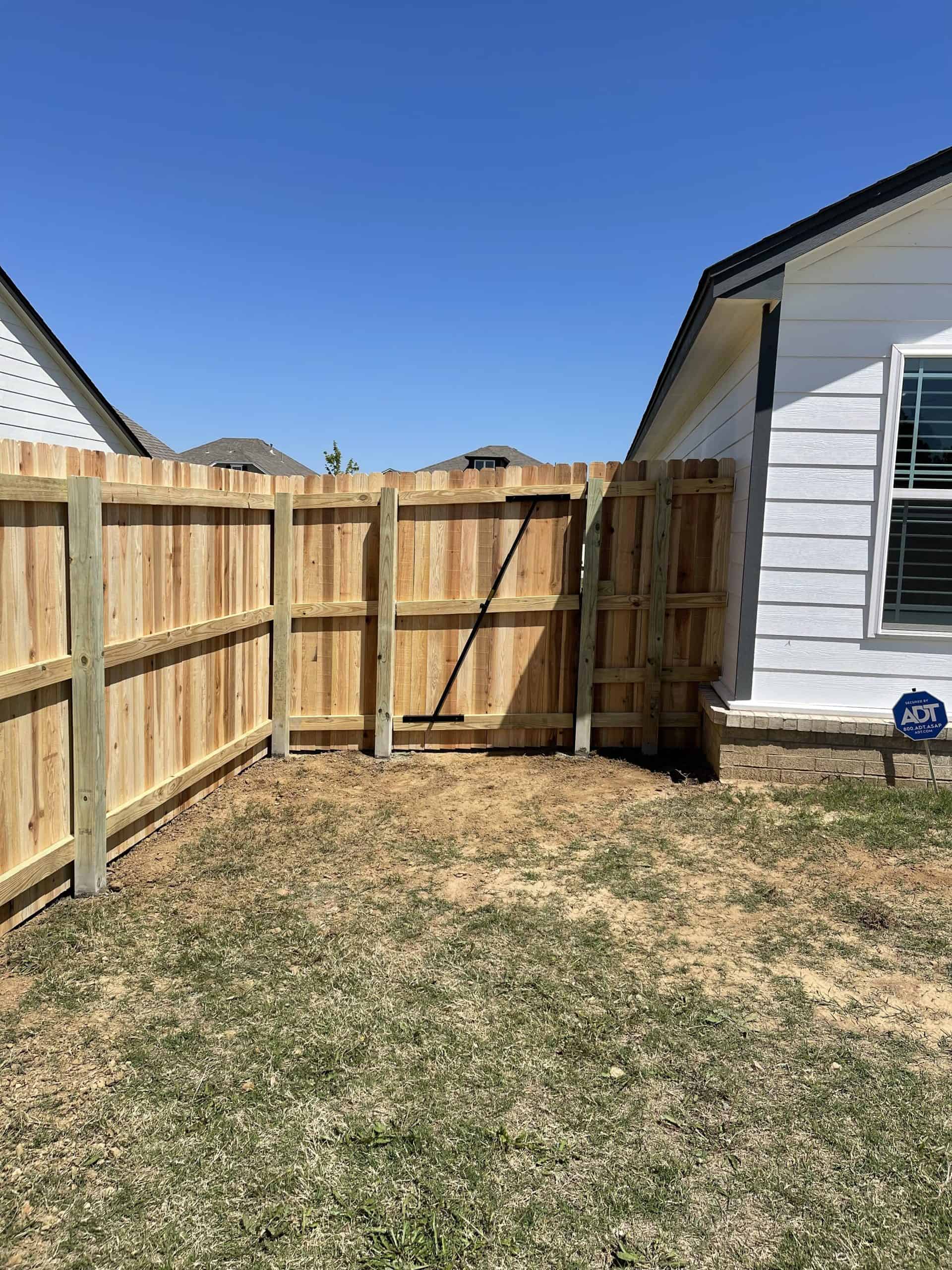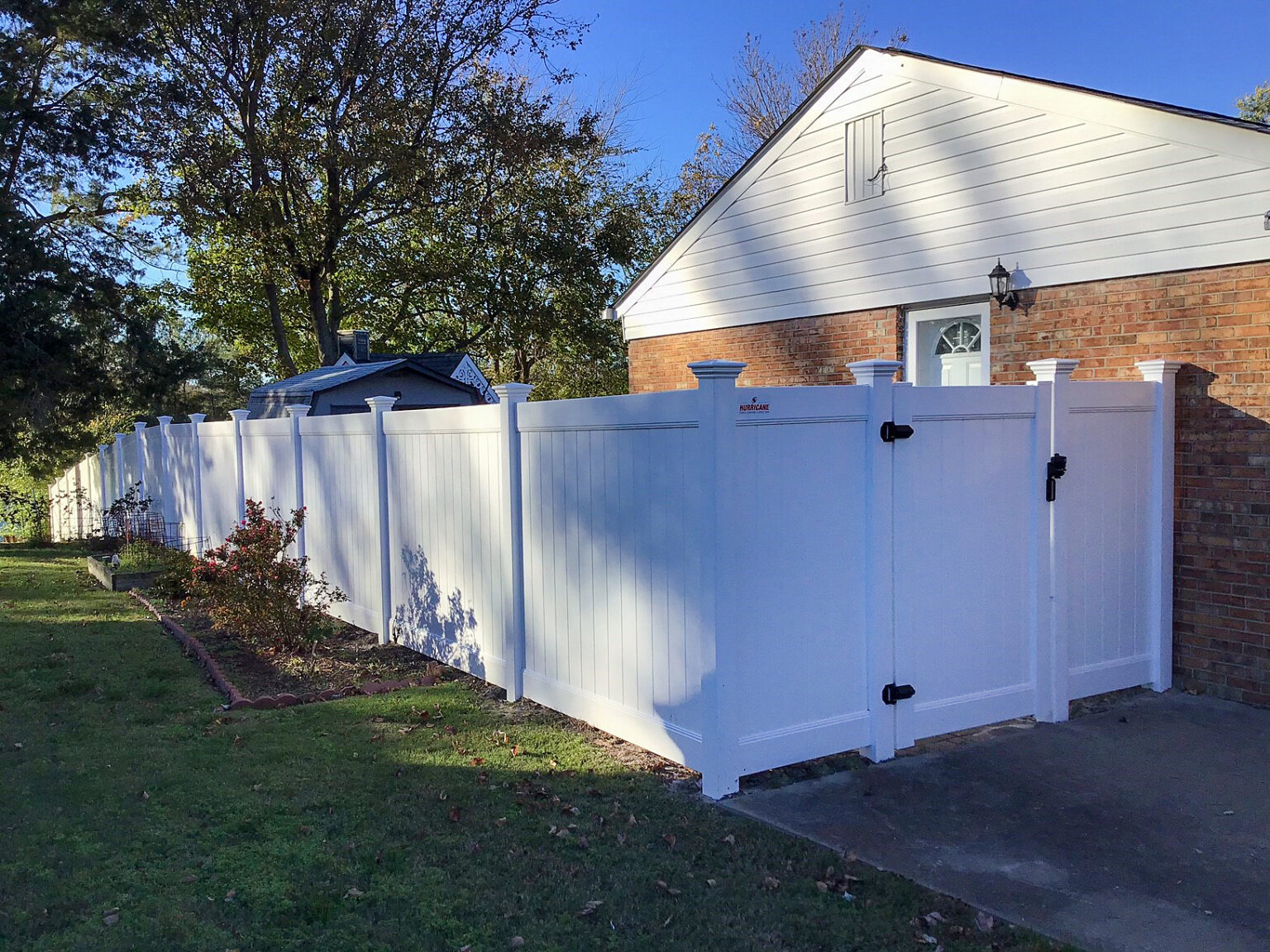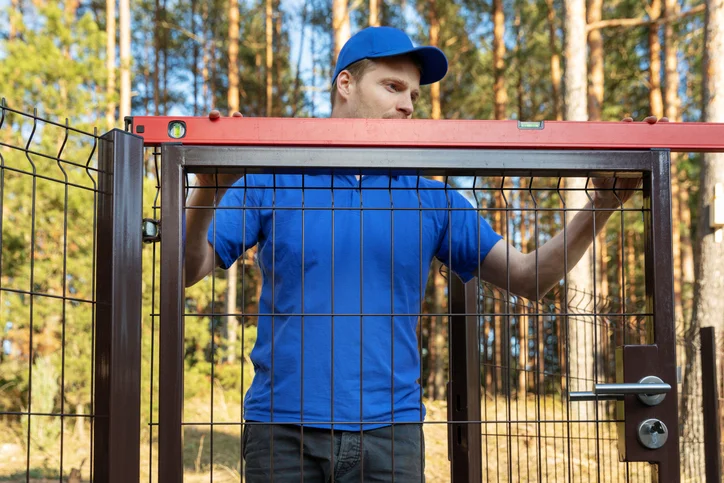Perks of Working with an Professional Fence Contractor
Perks of Working with an Professional Fence Contractor
Blog Article
How to Determine Typical Concerns That Require Immediate Fence Repair
It is essential to detect issues prior to they end up being bigger troubles when it comes to preserving your fence. Routinely inspecting for signs of deteriorating wood, leaning panels, or rust can save you money and time in the future. You may not realize just how weather and pests can compromise your fence's stability. Allow's discover the common indicators that show your fence requires instant focus, so you can maintain your residential property protected and looking its finest.
Indications of Rotting Wood in Wooden Fences
Have you seen your wood fence looking a little bit worse for wear? It may be time to inspect for indications of decomposing timber if so. Take a look at the base of the blog posts and panels for soft spots. If you push on the timber and it really feels mushy or crumbles, that's a clear sign of rot. Next off, search for discoloration or dark places on the wood-- these frequently signal dampness damages. Take note of any peeling off paint or finish, as this can reveal the wood to additional degeneration. In addition, a poignant, mildewy scent can show fungal growth. Don't forget to check links and joints; if they hang or breaking down, the timber under is most likely endangered. By capturing these indicators early, you can avoid much more considerable damages and keep your fencing standing solid. Routine maintenance is crucial to prolonging the life of your wooden fencing.
Leaning or Tilting Fence Panels
It's crucial to understand what caused it if you've observed your fencing panels leaning or turning. This issue may suggest underlying structural damage that requires your focus. Allow's check out the common causes and the repair options readily available to get your fence back fit.

Sources Of Leaning Panels
When you observe your fence panels tilting or leaning, it's often a sign of underlying problems that need dealing with. One common reason is insufficient drain; excessive water can deteriorate the soil around the fencing articles, damaging their assistance. One more culprit could be strong winds or storms that press against the panels, particularly if they're not properly anchored. Additionally, the all-natural settling of dirt in time can create posts to shift, leading to a tilt. Bugs, like termites, can compromise the integrity of wooden panels, triggering them to lean. Lastly, bad installment methods might cause panels not being safely set, leaving them susceptible to leaning under stress. Address these concerns quickly to maintain your fence's stability.
Indications of Architectural Damage
Observing turning or leaning fencing panels can be alarming, as these problems typically indicate architectural damage that requires instant attention. When your fencing starts to lean, it might indicate that the articles are moving or that the dirt around them has deteriorated. Pay very close attention to spaces in between posts or panels, as these can likewise recommend instability. deck builder. In addition, check for cracks or splintering in the wood, which can weaken the overall framework. It could endanger the stability of the fence if you discover corrosion or corrosion on steel components. Remember, ignoring these indicators can result in extra extreme damages down the line, so it's necessary to assess the scenario quickly and take action prior to it worsens
Repair Service Options Available

Rust and Rust in Metal Fences
If you have a metal fencing, you could see corrosion and deterioration sneaking in in time, particularly if it's exposed to moisture. These issues not only affect the look of your fence but can also endanger its architectural honesty. To identify corrosion, seek reddish-brown spots or spots, which indicate the steel is oxidizing. Deterioration can spread out rapidly if left without treatment, damaging the fence and leading to expensive repairs.To take on rust and corrosion, you must clean the affected areas with a wire brush and apply a rust-inhibiting primer. Once the guide dries out, consider painting the fence with a weather-resistant paint to protect it better. Normal upkeep, such as evaluating for indications of rust and touching up paint as needed, will certainly assist expand your fencing's lifespan. Attending to these concerns without delay guarantees your metal fencing stays solid and visually appealing for years to find.
Cracks and Splits in Vinyl Fencing

Causes of Plastic Damages
Plastic fencing is preferred for its sturdiness, yet it can still find out experience from cracks and divides because of different variables. One significant reason is severe temperature level fluctuations. When vinyl expands in the warm and agreements in the cool, it can damage the product over time. In addition, exposure to harsh sunshine can bring about UV degradation, making the vinyl brittle. Physical impacts, like hefty branches or unintentional accidents, can likewise produce splits. Poor installment or making use of low-grade products can aggravate these problems. Age plays a duty; older plastic secure fencing is a lot more vulnerable to damages. Normal assessments can help you determine these factors prior to they bring about substantial issues. Take aggressive measures to guarantee your fencing remains solid and undamaged.
Repairing Cracks Efficiently
Fractures and splits in your vinyl fencing can be worrying, resolving them promptly can protect against more damages and preserve the fencing's appearance. First, analyze the size of the fracture. For tiny cracks, a vinyl repair kit often consists of glue that can bond the edges, giving a seamless repair. Tidy the area completely prior to applying the adhesive, guaranteeing it adheres properly. For bigger splits, you might require to utilize a plastic patch. Cut the patch to dimension, apply glue around the sides, and press it strongly onto the split. Enable it to heal as per the producer's instructions. Routine maintenance and fast repairs can expand your fencing's life expectancy, maintaining it looking wonderful for years to come.
Loosened or Missing Out On Fence Articles
Loose or missing fencing messages can weaken the stability of your entire fence structure. If you notice any type of messages wobbling or leaning, it's important to resolve the problem instantly. Look for any type of indicators of movement, as this can bring about further damage with time. You can quickly assess the issue by providing each message a mild shake-- if it really feels unsteady, it's time to take action.For missing messages, you'll require to change them as quickly as possible to maintain your fence's stability. Make sure they're safely secured in the ground with concrete or crushed rock for included security when you mount new posts. If an article hangs, tighten it by including added support or driving it deeper into the ground.Ignoring these problems can cause bigger problems, like voids in your fencing and even full collapse. So, watch on your posts and remain proactive about repair services!
Damage From Weather and Natural Elements
Weather and natural aspects can unleash chaos on your fencing, bring about numerous kinds of damages that need timely interest. Heavy rain can cause wood to rot, making it weak and unstable. Snow build-up may bend or damage panels, while solid winds can uproot fencing blog posts or create sections to lean.If you discover cracks or splintering in wooden fences, it suggests drying as a result of extreme sunlight exposure. At the same time, steel fences can corrosion if safety layers subside, specifically in seaside or humid areas.Inspect your fencing routinely after tornados or extreme weather to capture any kind of damages early. Addressing these concerns promptly can conserve you from expensive repair work down the Visit Website line. Don't wait up until a little issue turns right into a major one; remain positive and keep your surround top form to keep both performance and aesthetic allure.
Parasite Infestation and Termite Damage
When you see signs of bug problem or termite damage, it's important to act rapidly to stop more destruction. Try to find mud tubes along your fencing or hollow-sounding timber, as these suggest termites are at job. You may likewise see little openings or frass, which is termite droppings resembling sawdust. If you detect any one of these indications, it's time to analyze the damage.Don' t wait till it's as well late; bugs can endanger your fence's honesty. Examine the surrounding area for beetles or ants, as they may be adding to the issue. If you visit the site believe an infestation, take into consideration getting in touch with a bug control specialist to treat the issue.repairing and verify or changing affected areas of your fencing immediately not only recovers its strength but also protects against bugs from spreading better. Remain watchful to maintain your residential property pest-free and secure.
Often Asked Questions
Just how Usually Should I Evaluate My Fencing for Damage?
You need to check your fence a minimum of twice a year, ideally during springtime and autumn. Regular checks aid you detect damage early, saving you time and cash on fixings while keeping your building's look and safety and security.
Can I Fix a Fencing Myself or Employ a Professional?
You can definitely fix a fencing on your own if you have the right tools and abilities. Working with a specialist assurances high quality job and conserves you time, specifically for complex repair services or comprehensive damages.
What Devices Are Needed for Standard Fence Repair Work?
For standard fencing repairs, you'll need tools like a hammer, screwdriver, pliers, a saw, a degree, and gauging tape. deck builder. Depending on the repair service, you could additionally require nails, screws, or replacement boards
Just How Much Does Fencing Fixing Normally Price?
Fence repair costs vary widely, however you can anticipate to pay in between $200 and $1,500 relying on products, labor, and level of damages. It's smart to get several quotes for the very best deal.
When Is the very best Season for Fencing Fixes?
The best time for fencing repair work is during mild weather, normally in springtime or early autumn. You'll stay clear of severe temperature levels, making it much easier to function and making certain the products established properly for lasting sturdiness (deck builder). Observing turning or leaning fencing panels can be worrying, as these problems often indicate structural damage that needs immediate interest. Absent or loose fencing articles can weaken the stability of your whole fence framework. Snow build-up might flex or damage panels, while strong winds can root out fencing articles or trigger sections to lean.If you discover splits or splintering in wood fences, it's a sign of drying out due to intense sunlight exposure. Steel fencings can corrosion if safety layers wear off, particularly in moist or coastal areas.Inspect your fence regularly after storms or severe weather condition to capture any damages early. Fencing repair expenses vary commonly, but you can anticipate to pay in between $200 and $1,500 depending on products, labor, and level of damage
Report this page